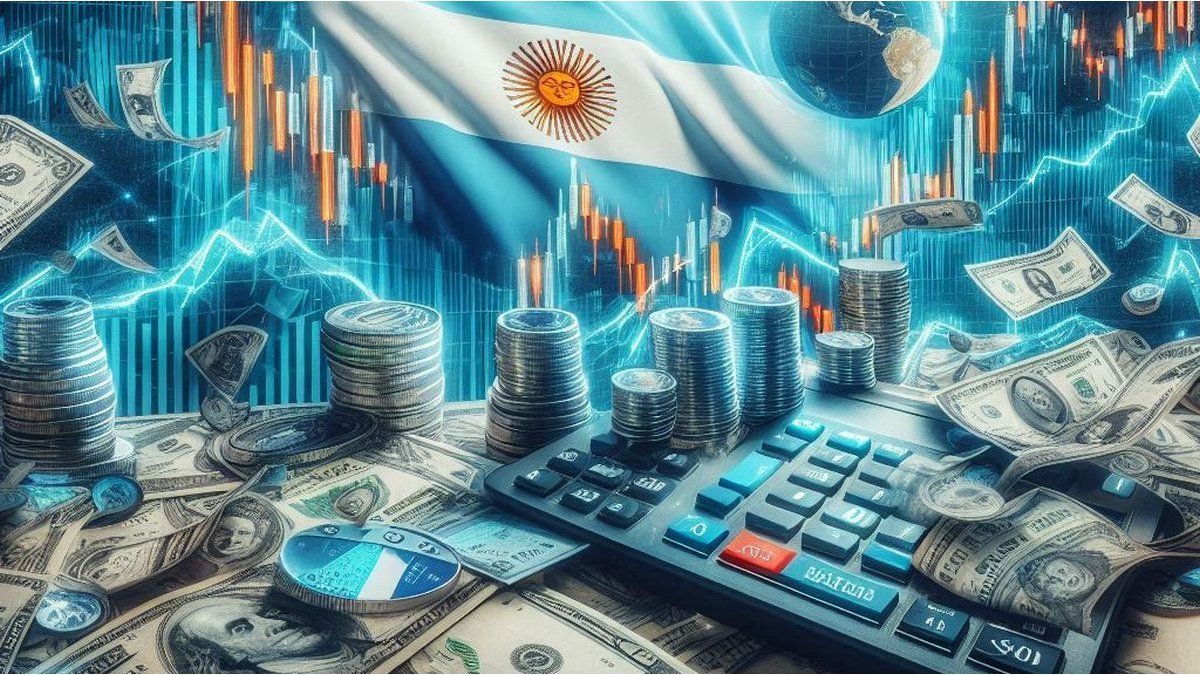. – The fiscal chapter will allow the government to have greater income from profits because it lowers the tax base, the advance payment of Personal Assets and the Tax Moratorium. On the other hand, raising the minimum monotax will help whitewash many activities. This will boost tax collection, which will be able to absorb the reduction of the Country Tax from 17.5% to 7.5%. This is very important in tax matters, since it should generate a reduction in costs for imported products, although many importers will take advantage of it to improve their profitability margin.
What about laundering and RIGI?
. – Laundering is more important than RIGI for reserves. If you want to launder and do not want to pay the fine, you can leave the money immobilized in a bank until December 31, 2025, this implies a genuine increase in reserves, without monetary issue counterpart, at least for 18 months. There are an estimated US$80 billion of black money, if we estimate that only 10% adhere to laundering, and 5% remain immobilized for 18 months, it would imply a significant increase in reserves. On the RIGI side, we believe that significant money will enter, probably distributed in the next 180 days, so there is no need to get excited about an immediate increase in reserves.
Is there the remainder of what does not liquidate the field?
. – Sooner rather than later, the field will have to liquidate part of its harvest, of a total of 50 million tons of soybeans and 45 million tons of corn, 12.6 million tons of soybeans and 13.9 million tons of soybeans were sold at a price. million tons of corn, 37.4 million tons of soybeans and 31.1 million tons of corn would remain to be sold. This implies that there are approximately US$ 21,000 million left to enter, as not everything is sold this year, we could think that of this sum there would be approximately US$ 15,000 million left to enter so far in 2024, a not inconsiderable sum. There are also about 4 million tons of wheat left unsold, and the next campaign could leave us with 18 million tons, which means there is some additional dollar income on this side.
From what I see we are very well?
. – It depends on how you look at it, in the first 5 months of the year exports were US$ 31,556 million, if the total of those exports had been collected, US$ 25,245 million would have been earned, since 20% is settled in the outside. The total imports of the first 5 months were US$22,744 million, if we had paid the total imports, the balance would be US$2,501 million. This shows us that it is difficult to continue with the methodology of allowing 20% of exports to be liquidated abroad, because many dollars are no longer received in reserves. If we count the total exports by hand, US$6,311 million remained abroad.
That money belongs to the exporters and they can do what they want
. – Correct, that will happen when Argentina leaves the stocks, today we have few reserves.
How are we coming for the second semester?
. – We believe that the government is ending a successful stage, 5 consecutive months of fiscal surplus, and deceleration of inflation, it must begin to show us the monetary and exchange path that it will adopt from now on. The president wanted a currency competition with a limit on the issuance of pesos, the dollar as legal tender and high reserve requirements for banks. The IMF in its latest report made explicit currency competition, with the issuance of pesos, without the dollar as legal tender, and an active role for banks without high reserve requirements.
Will there be an agreement with the IMF?
. – There are no major principal maturities ahead, after the payment of an amortization in July we have interest payments, but no additional principal payments in 2024 and 2025. However, it is vital to reach an agreement with the IMF for several reasons, firstly, to get some money to increase the reserves of the Central Bank and try to get out of the stocks, secondly and no less important, to have the guarantee to go out and look for money in the voluntary credit markets, and thirdly provide predictability to those who come to invest for the long term.
Is the fund more demanding with Milei than with previous governments?
. – So it seems, the government managed to lower inflation and has a fiscal surplus, however, the demands are increasing. The IMF is Peronist.
How do you see inflation 2024/25?
. – The market average sees it around 145% by 2024 and 50% by 2025.
How much would the devaluation rate be if we continue devaluing at 2.2% monthly?
. – That would give us a devaluation rate of 29.8% for the year 2024 and 2025.
How do we improve competitiveness?
. – This would leave us with inflation in dollars of 88.8% in the year 2024, and 15.6% for the year 2025. To improve competitiveness, the government should lower taxes, and businessmen invest in more technology, raise scales and lower profitability.
What can go wrong?
. – If it is not possible to continue with a fiscal surplus and decreasing inflation, the country could have complications. On the other hand, it is necessary to capitalize the Central Bank, with more reserves, so that economic activity improves, and lift the stocks in a relatively short period of time. If the restrictions are not lifted, the arrival of investments will continue to be delayed.
What should happen to financial assets?
. – If the economic program is a success, the country risk should be below 1,000 points, this implies that a bond like the AL30 should be worth US$68, with a potential increase of 20.8% from current prices . In the case of the AL35 it should be worth US$55, with a potential increase of 19.6% (investing less money than with the AL30). In the case of AE38 it should be worth US$60, with a potential increase of 25.1%. Each person chooses what risks to take; if the scenario is negative, short bonds will have more to fall than long bonds. Clearly the best thing is to be positioned in the long sections of the curve.
What happens to stocks?
. – Companies are valued according to the profit they show, we are in a period of investment and new businesses, those that adapt faster to this scenario would give the impression that they will have a great bullish rally. Due to the current scenario, companies linked to steel, construction, energy, mining and oil would be the leading ones. Regarding the banking sector, we believe that they have great possibilities, but the government should explain the monetary and financial plan, with the new role of the financial system in this new context.
Conclusion
. – The plan has great possibilities of success, but it will not be easy, a first stage has completed, and now we enter the preview of the elimination of the stocks, access to the voluntary debt market, and arrival of large investments.
. – Investing in bonds seems safer than investing in stocks, which will have great volatility and selectivity.
. – Dollar bonds from the longest section of the curve are the most attractive for investment.
. – Bonds in pesos adjusted for inflation must be measured by their yield in pesos plus inflation in dollars in the future, in this way we would make them comparable with sovereign bonds. The TX26 yields inflation plus 3.2% annually, and the TX28 yields inflation plus 4.8% annually. The duration of the TX26 is 1.3 years, the duration is a measure of the average maturity of the flow of future funds, remember that the TX26 pays 5 semiannual amortizations of 20% and an interest rate of 2.0%. In the case of the TX28 the duration is 2.2 years. The DICP bond is of interest, which yields inflation plus 5.9% and has a duration of 3.83 years.
. – As we see a scenario of high inflation in dollars in the short term, short inflation-adjusted bonds look very attractive.
. – In the current context, the 70-day Lecap has a return rate of 43.9% annually. While the implicit rate of the 70-day future dollar yields 49.9% annually, this tells us that the implicit rate of the future dollar is higher than the Lecap. For those who doubt these analyzes we will take another term, for example, the longest Lecap is as of April 30, 2025 with a return rate of 58.4% annually, while the implicit rate of the future dollar as of April of the year 2025 gives us a rate of 53.0% annually. In this case, the Lecap rate exceeds the implicit rate of the future dollar. Further to the right or left everything is arbitrated.
. – As structural reforms prosper, we believe that it will be more difficult to obtain satisfactory returns without taking risks, it is time to start analyzing new investment alternatives, for longer terms, tying up capital, and going out to capture more profits.
Financial analyst
Source: Ambito
David William is a talented author who has made a name for himself in the world of writing. He is a professional author who writes on a wide range of topics, from general interest to opinion news. David is currently working as a writer at 24 hours worlds where he brings his unique perspective and in-depth research to his articles, making them both informative and engaging.




